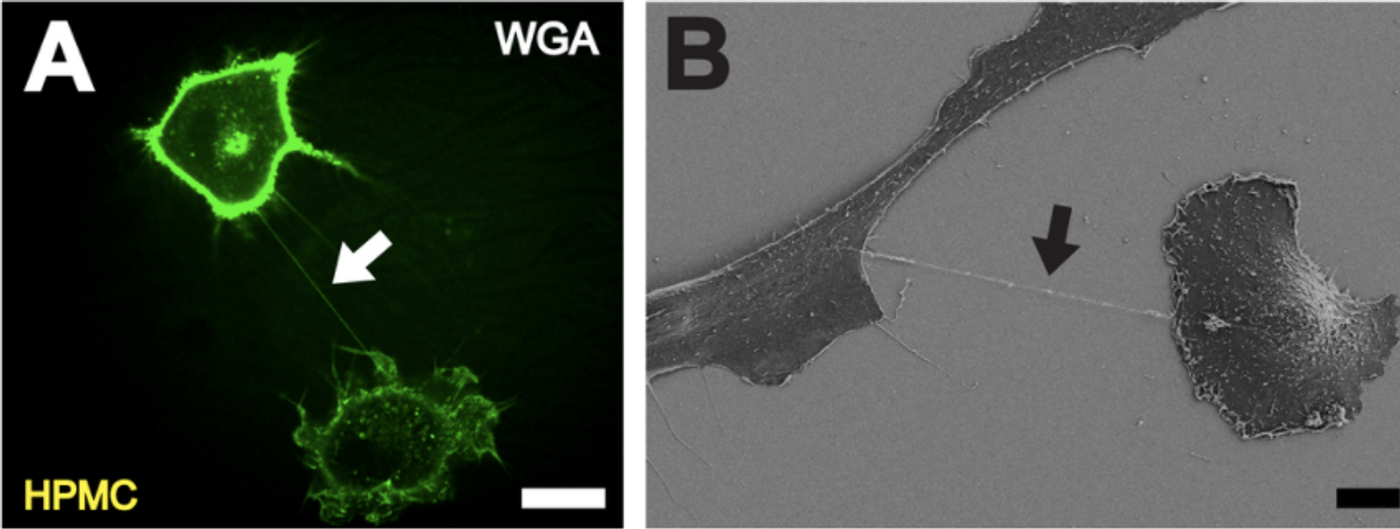Mysterious Nanotubes Link Cells Together
Many years ago, after discussing inexplicable experimental results with a colleague, researcher Yukiko Yamashita dug into her own post-doctoral research work, which was already twelve years old by then. The investigators were observing a unique way for cells to transmit messages to one another, which had not been properly described before. The data was revealing a kind of nanotube that physically connected cells. Learn more about these nanotube networks from the video.
“It was really eye-opening,” Yamashita commented to Nature News. The scientists reported their findings in 2015, arguing that this was a method of cellular communication. “We thought the protein was trafficked but we didn't think there was an actual track,” Yamashita said.
Some scientists think this is a paradigm-shifting way of looking at how cells interact; one is Amin Rustom, a neurobiologist at the University of Heidelberg in Germany, who observed such tubes during his own work as a graduate student nearly 20 years ago. If it turns out to be correct, he said, “it would change everything in medical applications and biology, because it would change how we see tissues.”
Unsurprisingly, not everyone is convinced, with some scientists commenting that direct cell contact is still the most efficient way for cells to move molecular messages to one another. These protrusions may not have anything to do with signaling. Because they are extremely difficult to study, scientists have not yet been able to prove that they have specific functions.
A variety of research groups working from different angles have reported on nanotubes multiple times, but it seems a limited number of groups have followed through and tried to determine exactly what they’re for. There has been speculation, however, and tubes that connect cells have been described by researchers studying cancers, neurons, epithelial cells, mesenchymal stem cells, and immune cells.
That has led to a chaotic assessment of what these tubes are. “We have to be rigorous in what we call these structures. At the moment it is very messy,” said researcher Chiara Zurzolo, who works at the Pasteur Institute in Paris and has observed that prions and other neurodegenerative proteins can move through nanotubes.
“What is really needed in the field is direct visualization of this process,” commented Ian Smith, a cell biologist at the University of California, Irvine. Typical microscopy tools can't capture a clear view of these structures at work under any condition. Smith is working to address that problem with new methods.
Some investigators that have been studying these structures are encouraged that people are starting to take it more seriously, after once calling them optical illusions. “Then it graduated to, 'well, just because they grow in a plate doesn't mean that it has anything to do with biology', and then it was, 'well you are probably misidentifying these or mischaracterizing them,” said Emil Lou, a cancer researcher at the University of Minnesota in Minneapolis. “I think we have to take it seriously as a therapeutic target. I couldn't have said that five years ago.”
Source: Nature










